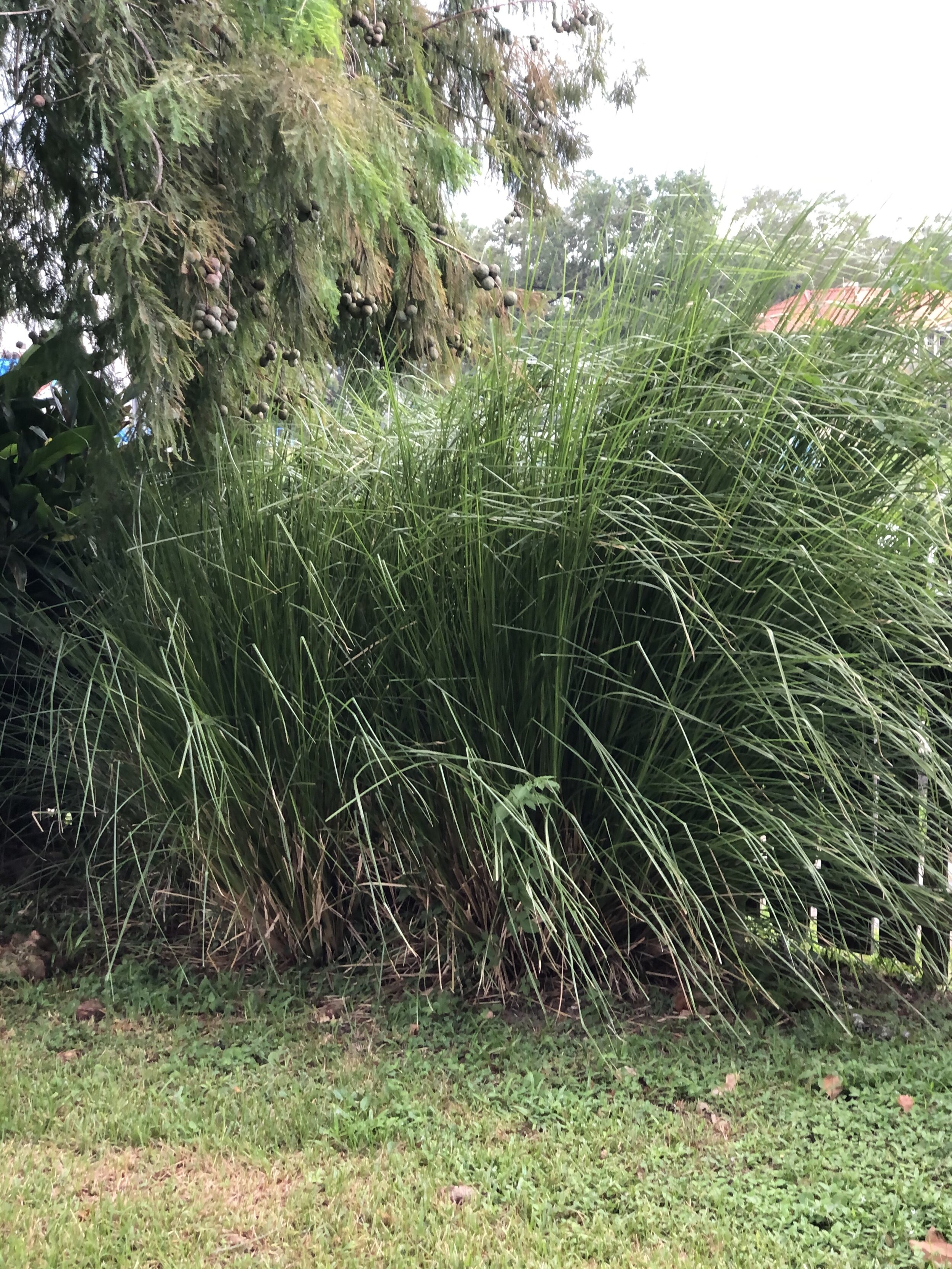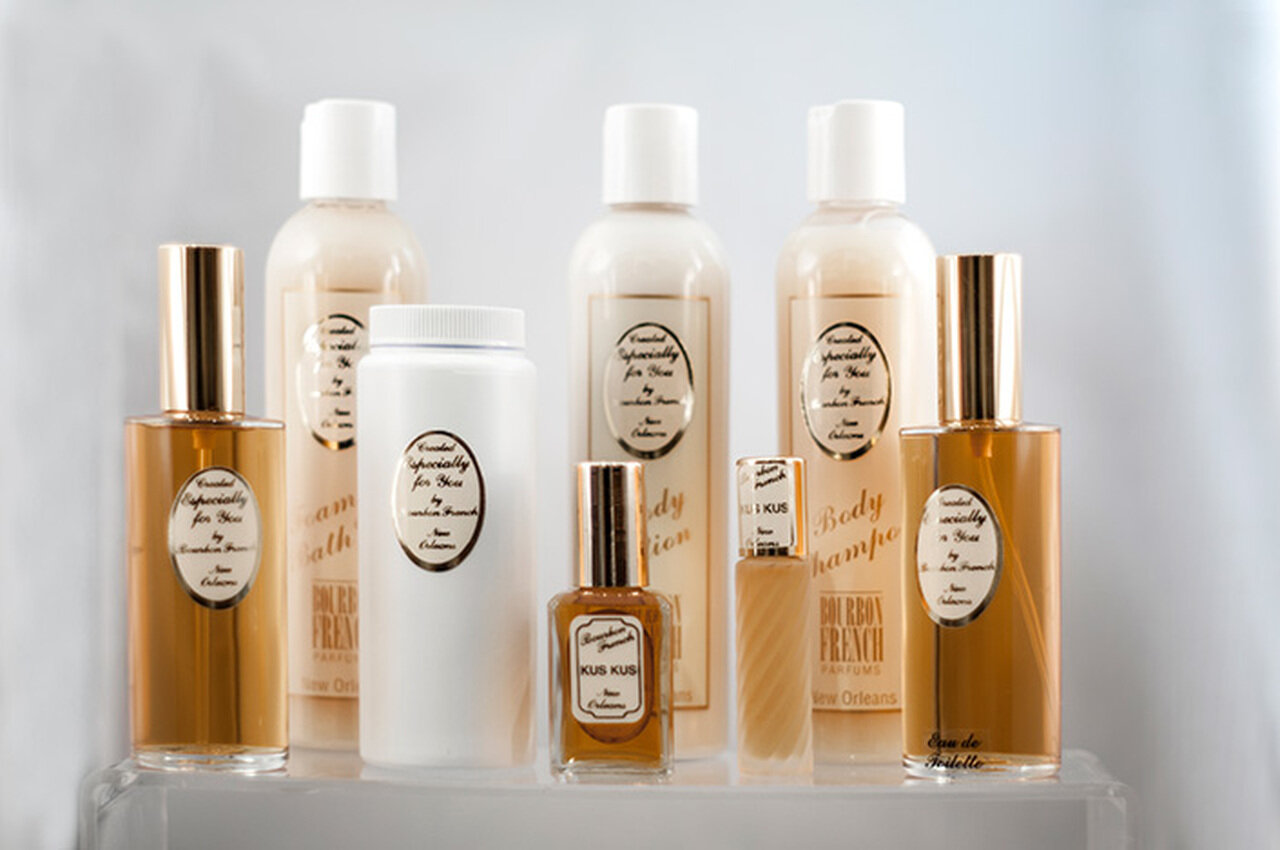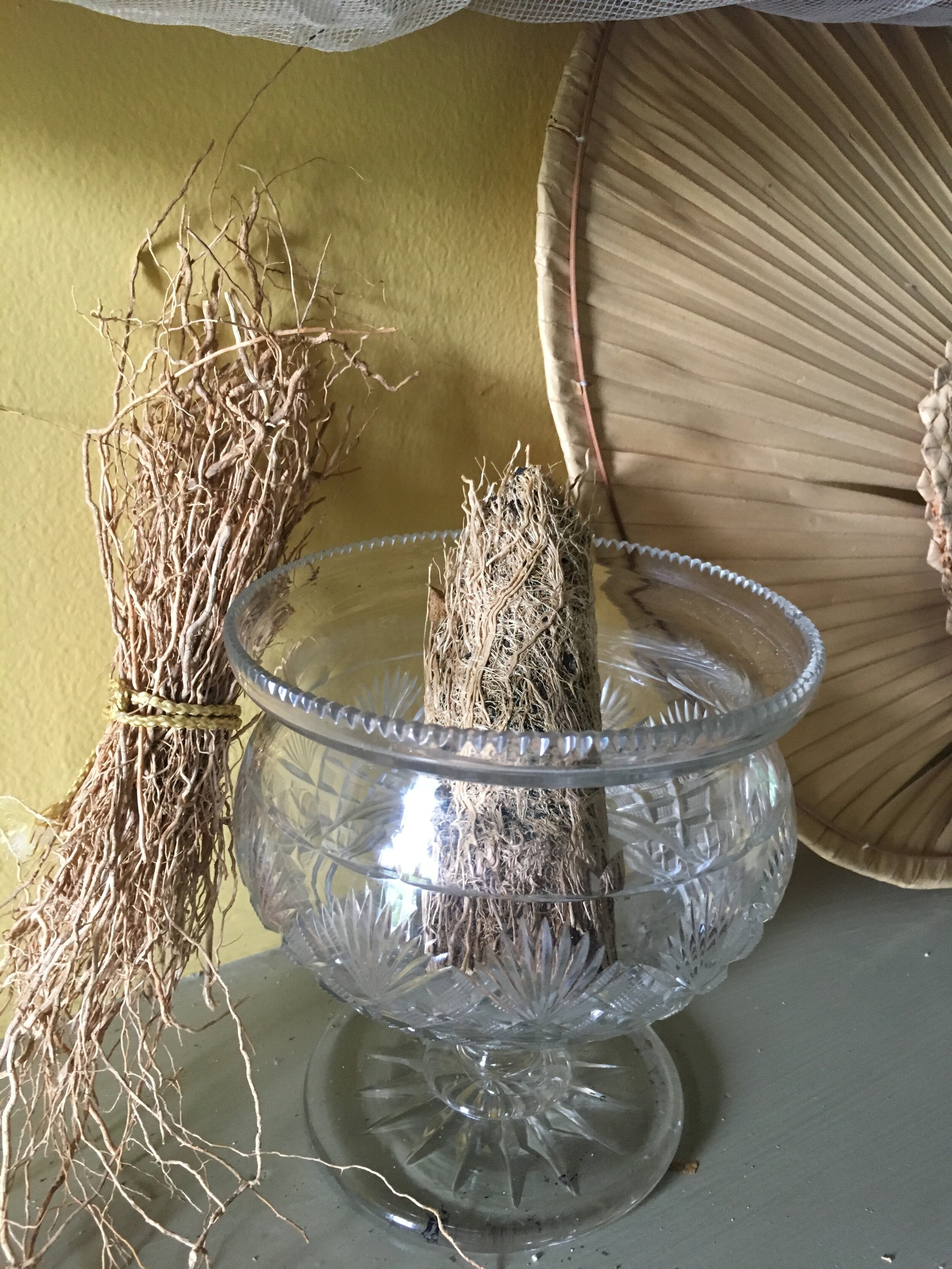Vetiver in New Orleans: A Heritage of Sharing
How did Vetiver come to be scattered to so many tropical outposts and how did it end up in New Orleans?
Vetiver is actually a grass, but its roots are aromatic. The woodsey scent of Vetiver is a familiar odor to generations of New Orleanians who remember little dried bundles of Vetiver root folded in with their stored linens. It isn’t just for the odor, Vetiver also is an insecticide, says entomologist Dr. Gregg Henderson of the LSU AgCenter, who has studied the plant.
We know that water scented with Vetiver root is used in religious rituals, and the plant is often found near temples and shrines as far away as Southeast Asia. The roots, when moistened, also serve as cooling screens when hung over windows, an ancient custom in the region. For all of these reasons, Vetiver seems to have long ago been spread by travelers, merchants, and emigrants throughout the vast trading region stretching from India through Malaysia to Indonesia, and beyond
An expansive Vetiver migration came during the period of the early oceanic trade between Asia and Europe, when a wide variety of economic plants were shipped among every tropical port. Much like the beleaguered English transportation of living breadfruit trees from the South Pacific to the Caribbean, it seems likely Vetiver was purposefully collected and transplanted as a potential agricultural commodity. Like so many other species, Vetiver probably formed part of the colonial economic plant exchanges. Though these plant exchanges began in earnest around 1500, and continued an ancient tradition, two "hard" dates stand out: 1809 and 1843.
In 1809, the first chemical analysis of Vetiver oil was done in France on extracts from roots imported from the Indian Ocean island of Réunion, where Vetiver is not native. We also know that since 1843 a Vetiver perfume called Kus Kus has been produced continuously in perfume-loving New Orleans, Louisiana which was a vestige of French colonialism and culture for several hundred years. Vetiver occurs in all the old French colonies, and it most likely arrived in Louisiana when it too was still culturally French ... Vetiver is still most-popular there among people of French descent. The important point is that by 1843, at the very latest, Vetiver was in Louisiana at the extreme terminus of global trade routes, up a river as far from “home” as Vetiver could be.
Widespread Vetiver introduction undoubtedly continued over the next century ... we know the British carried it to Fiji a hundred years ago and to the Caribbean and Malaysia as recently as the 1930s. Other Vetiver clones also came to Malaysia from Indonesia about this time, and there are also records of introductions to Indonesia from India in the 1890s.
We are pretty certain that by at least 150 years ago Vetiver was spread widely around the tropics. In recent decades, Vetiver has been found still growing near cane fields, on oil plantations, around old civil-engineering works, near abandoned house sites, in botanical gardens, and, with surprising frequency, in the home gardens of people both rich and poor throughout the tropics, grown as an ornamental, a medicinal, an insect repellent, and a fragrance plant.
There are a multitude of historic clues that make the broad picture clear. The traditional Vetivers, now commonly used around the world as a hedge against erosion, probably arose among the peoples of south India and Sri Lanka, and were spread by them through trade, religion, and migration centuries ago to the peripheries of the tropical Asia and the Indian Ocean. Vetiver had a pantropical distribution, at least in some scattered locations, because of introductions by Vetiver-oil producers and colonial authorities, and the later migrations of sugarcane workers.
Vetiver seems to have been fairly uniformly distributed, although perhaps thinly, across the tropics, occurring in most if not all countries. There is no evidence that Vetiver was ever hoarded or restricted, or pilfered or stolen. Except perhaps among the handful of top-quality oil producers and perfumeries, Vetiver’s heritage is one of sharing ... more like ancient crops such as rice or bananas or maize than like modern quinine or rubber. It’s no wonder in a city known for freely sharing it’s heritage and southern hospitality that such a generous plant as Vetiver would end up in New Orleans.
Vetiver Farm in Hammond, Louisiana




